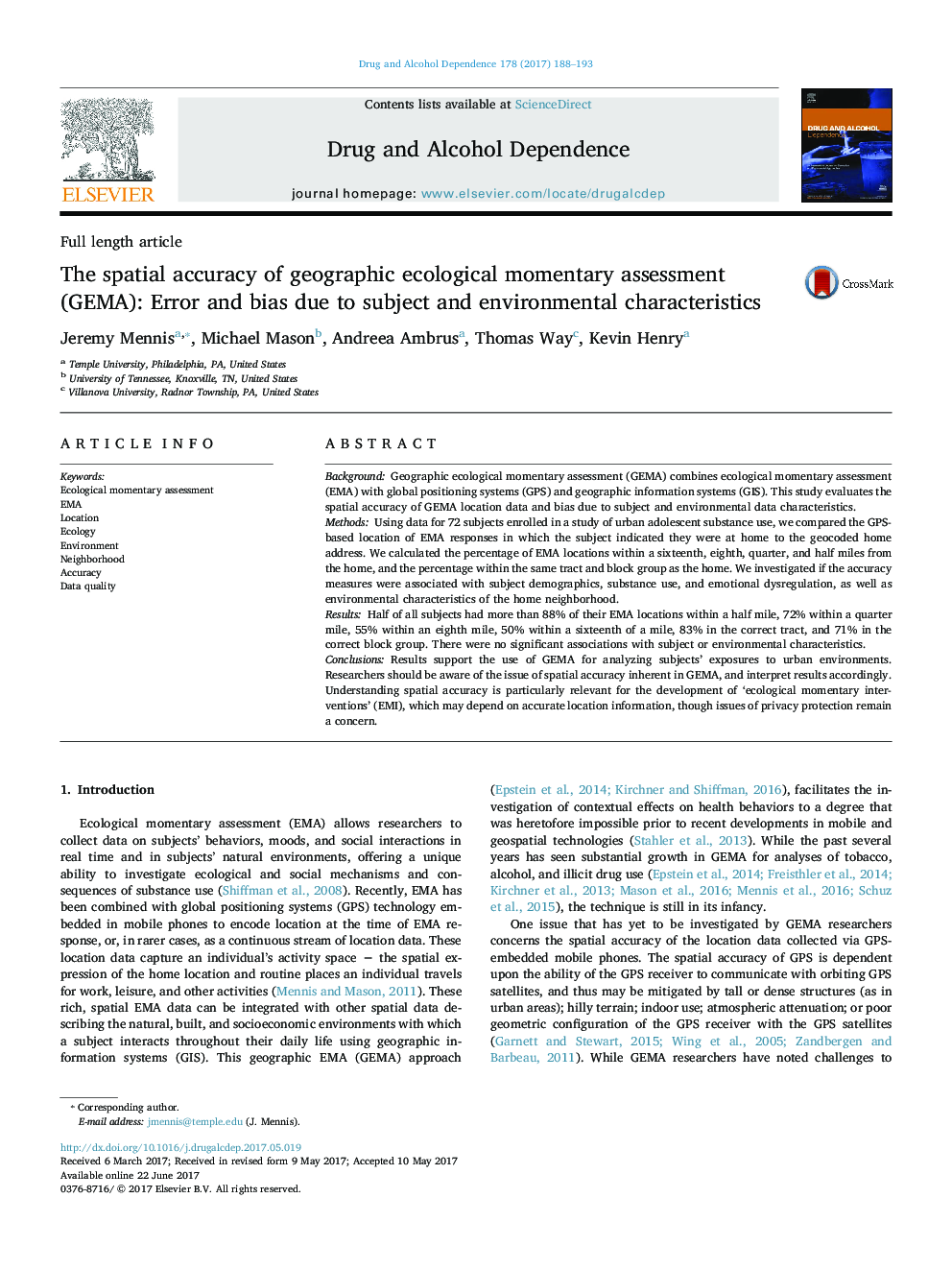| کد مقاله | کد نشریه | سال انتشار | مقاله انگلیسی | نسخه تمام متن |
|---|---|---|---|---|
| 5120348 | 1486113 | 2017 | 6 صفحه PDF | دانلود رایگان |

- Geographic ecological momentary assessment (GEMA) data contain spatial error due to subject and environment characteristics.
- The median subject-level GEMA accuracy to within a half mile was 88%.
- GEMA accuracy was not associated with subject or environmental characteristics.
- Understanding spatial accuracy is critical for GEMA studies and interventions.
BackgroundGeographic ecological momentary assessment (GEMA) combines ecological momentary assessment (EMA) with global positioning systems (GPS) and geographic information systems (GIS). This study evaluates the spatial accuracy of GEMA location data and bias due to subject and environmental data characteristics.MethodsUsing data for 72 subjects enrolled in a study of urban adolescent substance use, we compared the GPS-based location of EMA responses in which the subject indicated they were at home to the geocoded home address. We calculated the percentage of EMA locations within a sixteenth, eighth, quarter, and half miles from the home, and the percentage within the same tract and block group as the home. We investigated if the accuracy measures were associated with subject demographics, substance use, and emotional dysregulation, as well as environmental characteristics of the home neighborhood.ResultsHalf of all subjects had more than 88% of their EMA locations within a half mile, 72% within a quarter mile, 55% within an eighth mile, 50% within a sixteenth of a mile, 83% in the correct tract, and 71% in the correct block group. There were no significant associations with subject or environmental characteristics.ConclusionsResults support the use of GEMA for analyzing subjects' exposures to urban environments. Researchers should be aware of the issue of spatial accuracy inherent in GEMA, and interpret results accordingly. Understanding spatial accuracy is particularly relevant for the development of 'ecological momentary interventions' (EMI), which may depend on accurate location information, though issues of privacy protection remain a concern.
Journal: Drug and Alcohol Dependence - Volume 178, 1 September 2017, Pages 188-193